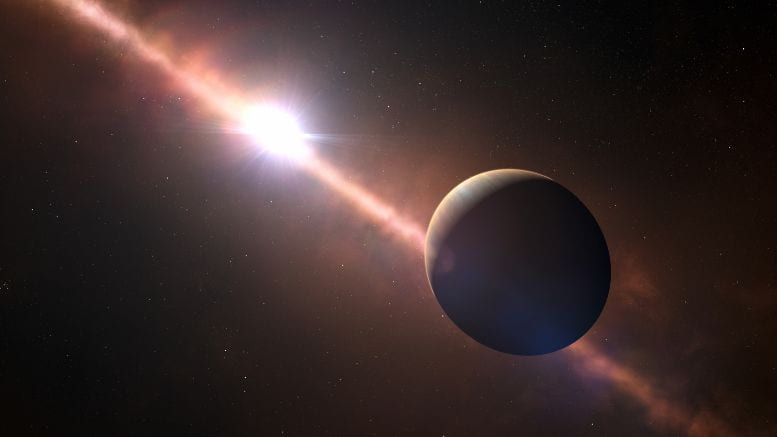Longest time-lapse footage of an exoplanet to date was assembled from real data
A Northwestern University astrophysicist has created the longest time-lapse video of an exoplanet to date.
Constructed from real data, the footage shows Beta Pictoris b — a planet 12 times the mass of Jupiter — sailing around its star in a tilted orbit. The time-lapse video condenses 17 years of footage (collected between 2003 and 2020) into 10 seconds. Within those seconds, viewers can watch the planet make about 75% of one full orbit.
“We need another six years of data before we can see one whole orbit,” said Northwestern astrophysicist Jason Wang, who led the work. “We’re almost there. Patience is key.”
An expert in exoplanet imaging, Jason Wang is an assistant professor of physics and astronomy in Northwestern’s Weinberg College of Arts and Sciences and member of the Center for Interdisciplinary Exploration and Research in Astrophysics (CIERA). Late last year, Wang unveiled a 12-year time-lapse video of a family of four exoplanets orbiting their star.
Above: The longest time-lapse footage of an exoplanet to date, all made with real data. Beta Pictoris b is a 12 Jupiter mass planet orbiting its star at a distance of 10 AU (10x Earth-Sun distance) on a near-edge on orbit. The first image of the planet was obtained in 2003. However, then planets projected orbit passes too close to the star to be seen for several years, until it reappears on the other side in 2009. The same thing happend again between 2016 and 2018. You can also see the exoplanet imaging technology happen over time. Credit: Jason Wang/Malachi Noel Data from this movie are from the Gemini Planet Imager, NACO, and SPHERE instruments and span 17 years.
Beta Pictoris b is an enormous planet, located about 63 light-years from Earth in the constellation Pictor. The distance between Beta Pictoris b and its star (Beta Pictoris) is about 10 times the distance between the Earth and the sun. Compared to our sun, Beta Pictoris is 1.75 times as massive and 8.7 times more luminous. It also is very young — only 20 to 26 million years old.
When Beta Pictoris b was first imaged in 2003, its size and brightness made it easier to spot, compared to other exoplanets.

Jason Wang
“It’s extremely bright,” Wang said. “That’s why it’s one of the first exoplanets to ever be discovered and directly imaged. It’s so big that it’s at the boundary of a planet and a brown dwarf, which are more massive than planets.”

